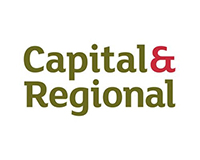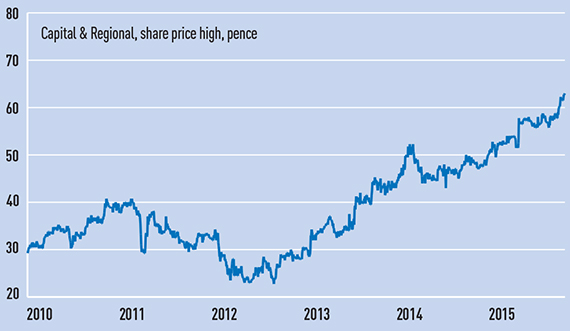 There have been few property turnaround stories as big as that of Capital & Regional.
There have been few property turnaround stories as big as that of Capital & Regional.
Once a giant of retail investment, the company became a victim of excessive leverage and crashing retail occupier markets that nearly brought it down.
But by the end of 2014, things had been turned around, and the business made a £57m profit in the first six months of 2015, as its half-year results, published this week, show.
The architects of the recovery have been Hugh Scott-Barrett and Charles Staveley, who joined in 2008 as chief executive and group finance director respectively.
The first steps the team took were to rationalise and restructure where they could.
Protection measures from creditors were taken when needed, buying back the loans underlying a covenant-breaking German CMBS in order to negotiate better terms.
A 2014 Morgan Stanley refinancing of the £350m CMBS held against its Mall Fund debt was another step towards rationalising the business.
At the same time, Capital & Regional took the decision to buy out Aviva, its 50% partner in the fund, and take control of the entire portfolio.
Last year proved a crucial period for the company, as it also completed the disposal of its non-core German assets and converted to REIT status.
Since then the company’s results emphasise the significant strides it has taken to enhance its core UK business, particularly through the six assets held in the Mall Fund.
Its half-year results show that asset management activities added 13% to the net asset value of the company.
“The headline improvement in operating profit reflects the fact that we now own 100% of the Mall, whereas in a previous year we only had 30%,” says Scott-Barrett, adding that on a like-for-like basis the performance of the assets has improved greatly since the end of June 2014, with income growth of nearly 8% and operating profit growth of 28%.
“They reflect that we now have complete control, we have restructured the fund, taking out costs,” he says.
Occupancy has improved significantly year-on-year to 96.4% and 15 rent reviews have delivered a 6.9% uplift on previous rents. One of the drivers for this improvement has been the use of capital to improve the existing assets, particularly in the Wood Green shopping centre, N22, and The Mall in Walthamstow, E17.
“The assets are responding really well,” says Scott-Barrett. “The income side takes a little bit longer to flow through but the signs in the numbers are very encouraging in signalling that the potential can be unlocked.”
Other plans include a residential development to sit alongside its Walthamstow centre and the deployment of the company’s £40m of cash and £12m of undrawn bank facilities for the acquisition of “beneath the radar” assets.
The company will also look to recycle assets “once we have completed the programme of asset management and delivery of the uplift”, says Scott-Barrett.
City analysts believe the company has been undervalued over the past six months. The shares trade at a 6% discount to the estimated year-end NAV
of 70p and it is broadly considered that, at 3p, the expected year-end dividend is looking like a good-value return for investors.
If any have pulled back their recommendations to go overweight on the company, it has simply been because some investors have already seen the value in it and piled in.
Capital & Regional

Chief executive: Hugh Scott-Barrett
Market cap: £453.4m
NAV: 67p
LTV: 48%
Share price: 64.5p (11 August 2015)
Discount to NAV: 3.7%
Key assets: As well as the six assets held in the Mall Fund, the company owns 100% of indoor ski slope business Snozone, which operates at Xscape Milton Keynes and Castleford, west Yorkshire. It also has joint venture interests in the Buttermarket shopping centre in Ipswich and the Kingfisher mall in Redditch.










